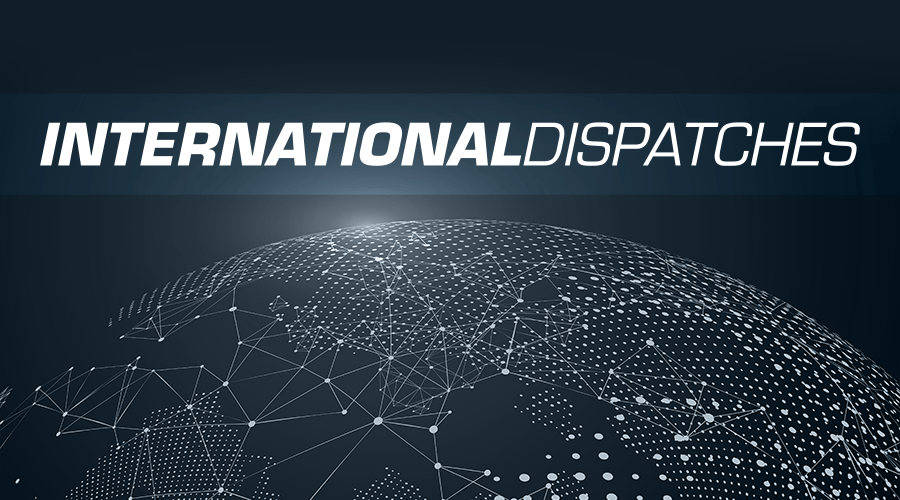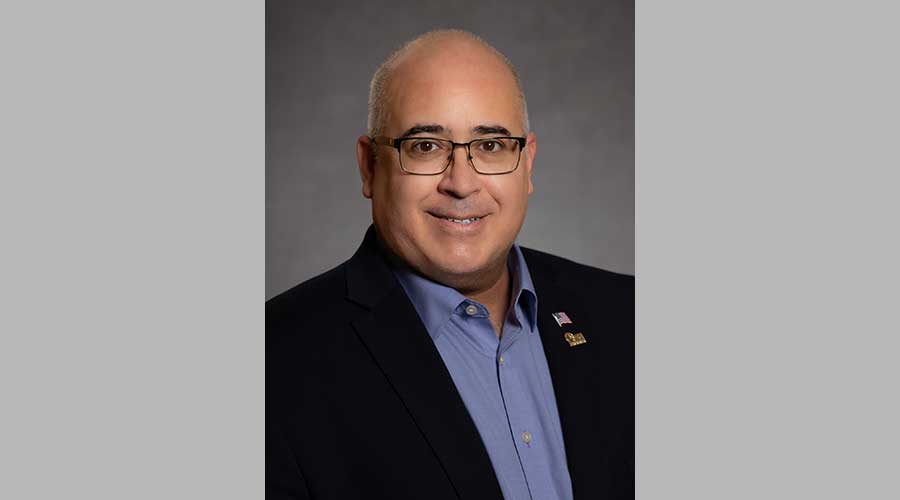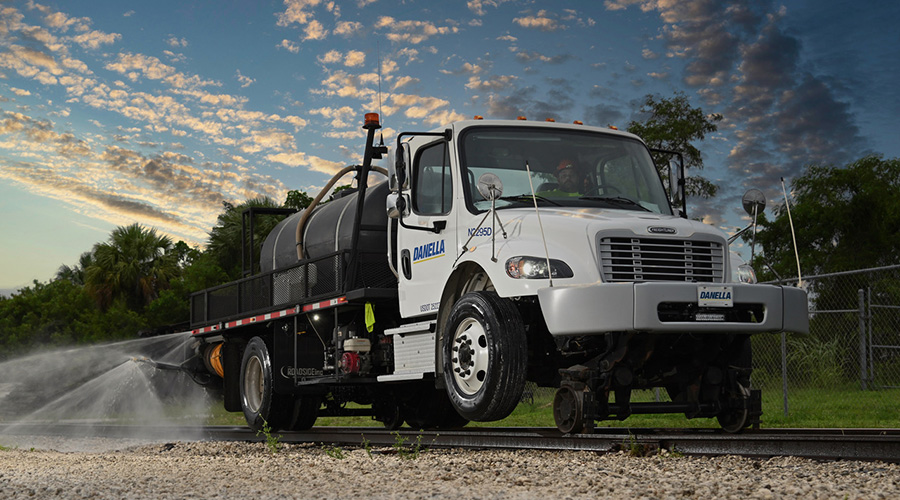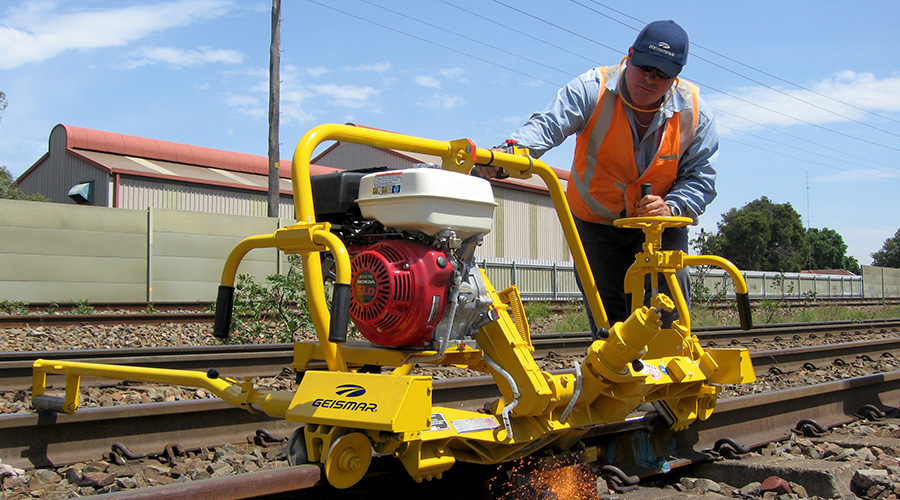Stay updated on news, articles and information for the rail industry
April 2015
Rail News: MOW
Rail-focused education programs for engineers aim to close the industry's talent gap
By Daniel Niepow, Associate Editor
Like many in the rail business, Dallas Richards has spent several years mulling over a plan to address the industry’s talent deficit. His dual role as a senior project manager at TranSystems Corp. and adjunct engineering professor at the University of South Carolina provided him with one solution: adequate education for transportation engineers interested in rail.
It’s a theme beginning to take hold in the industry, as public and private entities implement education programs aimed at targeting new or soon-to-become track engineers.
For Richards, the idea took root when he served on the education and training committee of the American Railway Engineering and Maintenance-of-Way Association (AREMA). He spent some time reviewing an AREMA survey that identified a lack of comprehensive rail engineering curriculum among traditional engineering programs.
“A lot of undergraduate [engineering] programs don’t cover rail in any capacity, or if they do, it’s a very limited capacity,” Richards says.
When he was hired at TranSystems in 2012, Richards drafted a plan for a company-created education program. He floated the idea by John Nussrallah, market leader for the company’s freight and passenger rail sectors. Nussrallah shared his views on the need for rail engineers, and in 2014, Richards’ idea debuted in the form of TranSystems’ Railway Engineering Education Seminars (TREES).
Twelve of the company’s engineers are participating in this year’s program, which began with two days of lectures at the company’s headquarters in Kansas City, Mo., to be followed by 16 webinars over an 8-month period.
Word of the program piqued interest in some of TranSystems’ rail clients, so the company decided to open up enrollment to three Class I participants this year.
Given TranSystems’ broad client base, participants may come to the program with little rail-specific engineering knowledge. But Richards and colleagues Bruce Anderson and Dave Irving designed webinar topics with participants’ limited knowledge in mind. The curriculum builds incrementally, beginning with foundational matters like track alignment and design, and progresses to more sophisticated topics, such as intermodal facility design, Richards says.
“They want to grow and learn and take the reins as soon as they can,” he says, referring to the company’s newer engineers. “Tempering that with having some technical knowledge and experience is also beneficial.”
All participants spend time working on a rail-focused engineering project and doing site visits to satisfy the program’s graduation requirements so that even those without rail experience come away with some.
One student who initially worked on highway-related transportation projects ended up switching over to TranSystem’s rail division following last year’s TREES program, Richards notes.
Execs at New York City's Metropolitan Transportation Authority (MTA) also are leveraging educational opportunities to recruit next-generation railroaders. But the agency aims to attract potential engineers long before they they’ve moved on to university-level education or landed their first jobs.
“Having engineers speak to [high school] students about the path that their career took and the everyday reality of being an engineer is important,” says MTA spokesman Aaron Donovan.
In 2013, MTA’s capital construction division hosted an event for about 100 local high school students to get a closer look at some of the agency’s engineering-related challenges — and opportunities. The students spent some time at the agency’s offices in lower Manhattan, where they heard from MTA Capital Construction Co.’s President Michael Horodniceanu and other agency leaders. At the end of the session, students broke off into groups to continue talks with MTA engineers.
In February, the agency debuted its “Engineers Week” program, where MTA engineers visited local engineering and architectural prep schools in an effort to spark interest in rail transit projects.
Reaching out to students with a bent for STEM disciplines — that is, science, technology, engineering and mathematics — fits into the agency’s overall mission, Donovan says. But MTA still faces a challenge in selling the rail industry to students who also could enter fields such as video game programming or computer engineering.
“That is where the connection with our staff of engineers is critical,” Donovan says. “They can really talk to the satisfaction that you get from seeing a project complete.”
Such programs also are aimed at illustrating the far-reaching effects of the rail industry’s shortage of engineers, Donovan says.
“What we really must do is make sure the next generation understands the crucial role that engineers play in maintaining our way of life,” he says. “We in the industry must communicate that message with a greater sense of urgency than we currently do.”


 2025 MOW Spending Report: Passenger-rail programs
2025 MOW Spending Report: Passenger-rail programs
 Gardner steps down as Amtrak CEO
Gardner steps down as Amtrak CEO
 Guest comment: Oliver Wyman’s David Hunt
Guest comment: Oliver Wyman’s David Hunt
 Women of Influence in Rail eBook
Women of Influence in Rail eBook
 railPrime
railPrime







